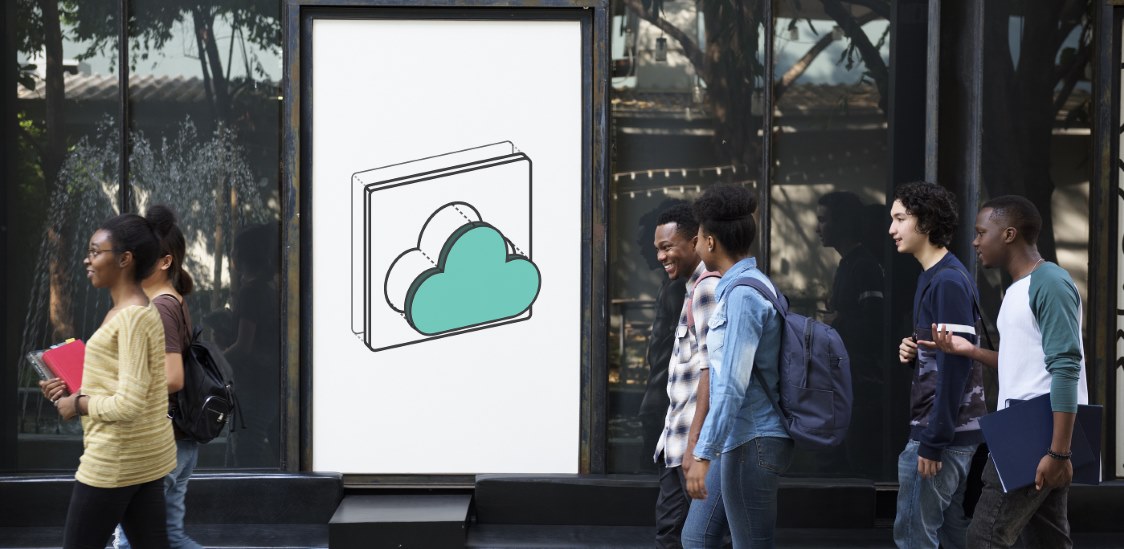In 2020–2023, the ad tech market has been everything but stable; shattered by pandemics and socio-economic turbulence and stifled by new global data privacy regulations (GDPR, CCPA) and third-party cookies shutdown, it has seen some biggest transformations in years. However, as we know, the darkest time is before dawn, and the same thing we are now observing with a revival of the ad tech landscape. According to statistics, programmatic ad spending only in the US will reach $168 billion. Meanwhile, the global ad tech market is predicted to grow at a CAGR of 30% and is expected to hit the bar of $649.63 billion by 2027.
As the market is actively changing, it is developing new leverages and introducing new standards in order to adapt to the new realms. Because of this, we have new trends that will govern the development of the advertising scene in the coming years. So, what are those trends that will shape the future?
#1: New ad experiences with DOOH
As the pandemic is no longer an issue, advertisers are actively searching for unexplored and new niches and advertising channels where they can reach their potential customers.
Out of Home Advertising Association of America states that over 51% of people who live in big cities are noticing ad messages when it comes to outdoor advertising. That’s why digital out-of-home (DOOH), represented by interactive billboards and screens (e.g., placed at public places like airports or fitness centers), brings outstanding opportunities for brands to engage with their audiences.
For instance, in 2017, Coca-Cola used weather and location data to display targeted advertising on outdoor screens. If the air temperature were high, a video promoting chilled Coca-Cola would appear on the screens to evoke a sense of thirst among consumers.
With this, the targeting data is not bound to weather conditions but also spans all potential sources of data available for integration. What we can expect from DOOH in 2024 is the development of interactive solutions and the widespread integration of augmented reality elements into the advertising process. This will lead to the popularity of fundamentally new formats for capturing user attention.
#2: AI and ML optimization
Smart AI algorithms in social networks and online advertising platforms can already choose optimal content, color schemes, slogans, and ad headlines while showing ads to particular users. They can analyze data, determine the best time for displaying ads, and predict which ad creative is most likely to capture the attention of potential customers. Finally, they constantly analyze the bidding patterns during programmatic auctions to determine the optimal path and cost for ad impressions.
For instance, earlier this year, Google Ads introduced new generative AI features for its Performance Max advertising package along with Smart Bidding capabilities (that increase the effectiveness of media trading). Advertisers in the United States now have access to the beta version of these features, which enables the easier and more efficient creation of textual and graphical assets for advertising campaigns.
As opportunities are tremendous, the worth of AI in marketing and advertising is expected to grow at breakneck speed – from $27.4 billion (2023) to 107.4 billion (2028). For sure, AI is unlikely to completely replace humans in the near future; however, the capabilities for automatically creating and configuring advertisements will continue to expand. New technologies will assist marketers in making targeting more precise and, consequently, displaying more personalized and relevant ads to audiences.
#3: Transparency, measurability, and user data protection
While some ad campaign measurement methods may still raise questions, having unified and market-accepted standards represents significant progress in this area.
For example, this year, local outdoor advertising operators in the UK initiated the process of developing a unified system to verify outdoor advertising, collaboratively seeking the most accurate counting methodology. Such unified systems should also be developed globally for measuring campaigns on connected TV (CTV) and digital out-of-home (DOOH) screens. For now, many ad tech players also consider the adoption of Unified ID, a robust alternative for proper attribution and campaign measurement.
Concerning privacy, around 70% of advertisers and marketers now prefer contextual targeting over cookie-based one. Along with this, many embrace DOOH and CTV advertising that doesn’t depend on cookies in so many aspects.
#4: Significance of media partnerships
Commercial media provide an opportunity for publishers to become their partners in creating unique commercial opportunities. Thanks to the convergence of content, commerce, and proprietary data, publishers can facilitate initial customer contact, while retailers can streamline transactions for consumers through new commercial tools on publisher sites.
This is a mutually beneficial scenario for retailers looking to expand their media capabilities and for publishers aiming to enhance their commercial performance through persuasive advertisements or sponsored content. It also ensures an optimized user experience, allowing marketers to achieve revenue targets and improve the perception of their brands. To multiply the success of such collaborations, in 2024, publishers will pay even more attention to such partnerships.
#5: Zero-code ad tech platforms
The ease of campaign management, automated AI-driven campaign optimization, and the speed of real-time bidding (RTB) ad purchasing methods attract medium and small businesses to such lucrative niches as programmatic and ad tech. As a result, we see many new companies opening their own business and building their own platforms (often called ‘going in-house’).
While the ad tech niche is really profitable, for smaller companies, it can cost an arm and leg to build their own platform from scratch. However, right now, it is fairly simple and much easier for new companies to enter programmatic by having the right partner. That’s when we start talking about the significance of partnerships again.
A tech partner can provide a prebuilt tech core of their own platform to the new business, which enables setting up a new independent solution in days without coding. It also eliminates the labor and, thus, cost. This quite efficient business model, called white-label, is rapidly gaining traction in the ad tech world. It is expected to raise its demand in 2024 and beyond as it simplifies the market entry for new ad tech companies while providing additional sources of income to the technology vendor.
#6: The bottom line
With the continuous development of technologies and solutions, advertising will become increasingly personalized, interactive and innovative in many terms. Thanks to the implementation of new technologies and innovative approaches, new interactive formats for advertising creatives will emerge, along with novel methods for targeting, measurement, and ad tech business entry. As a result, the market will continue to strengthen while introducing new, effective, and promising means of brand promotion.






















